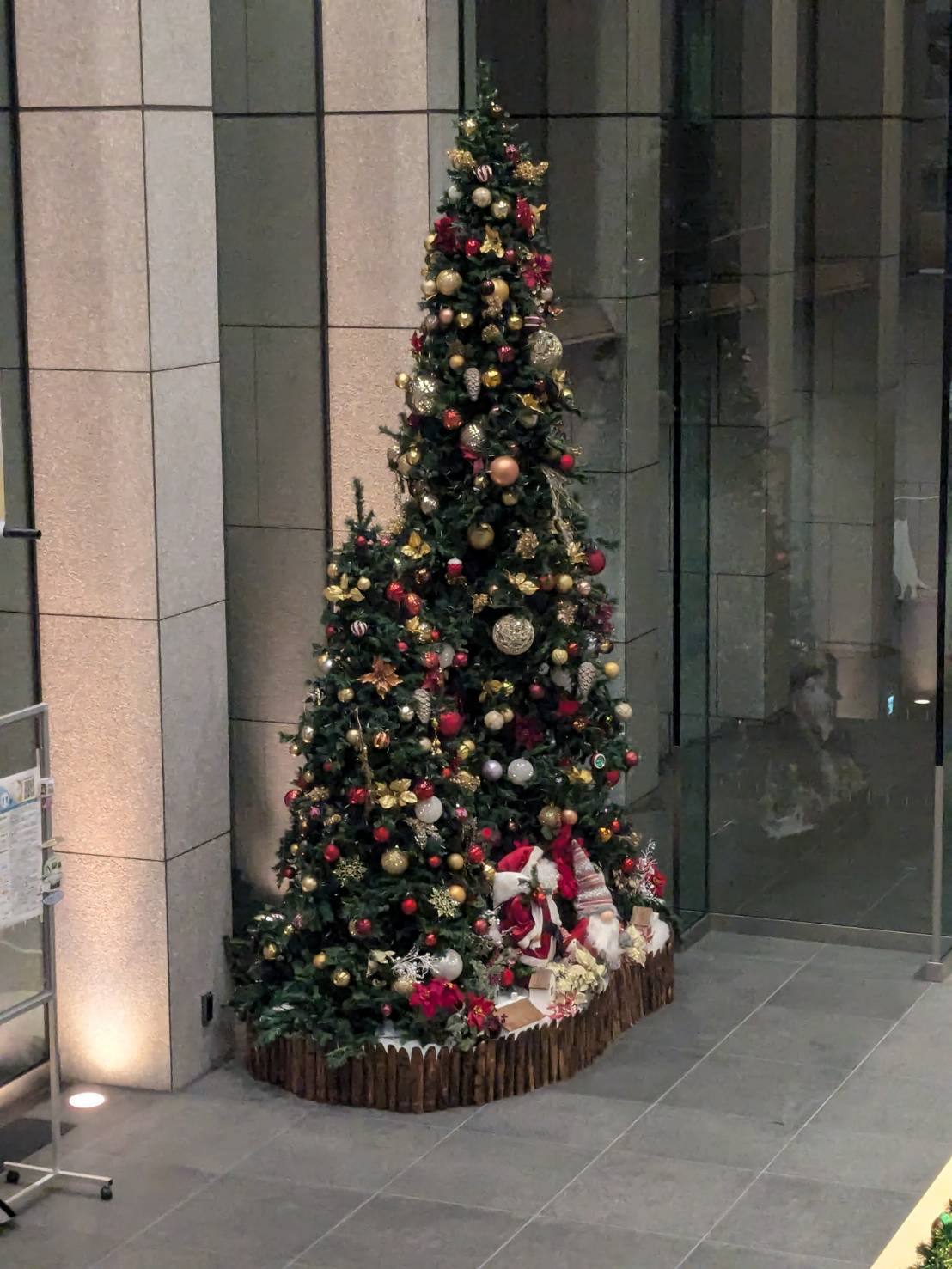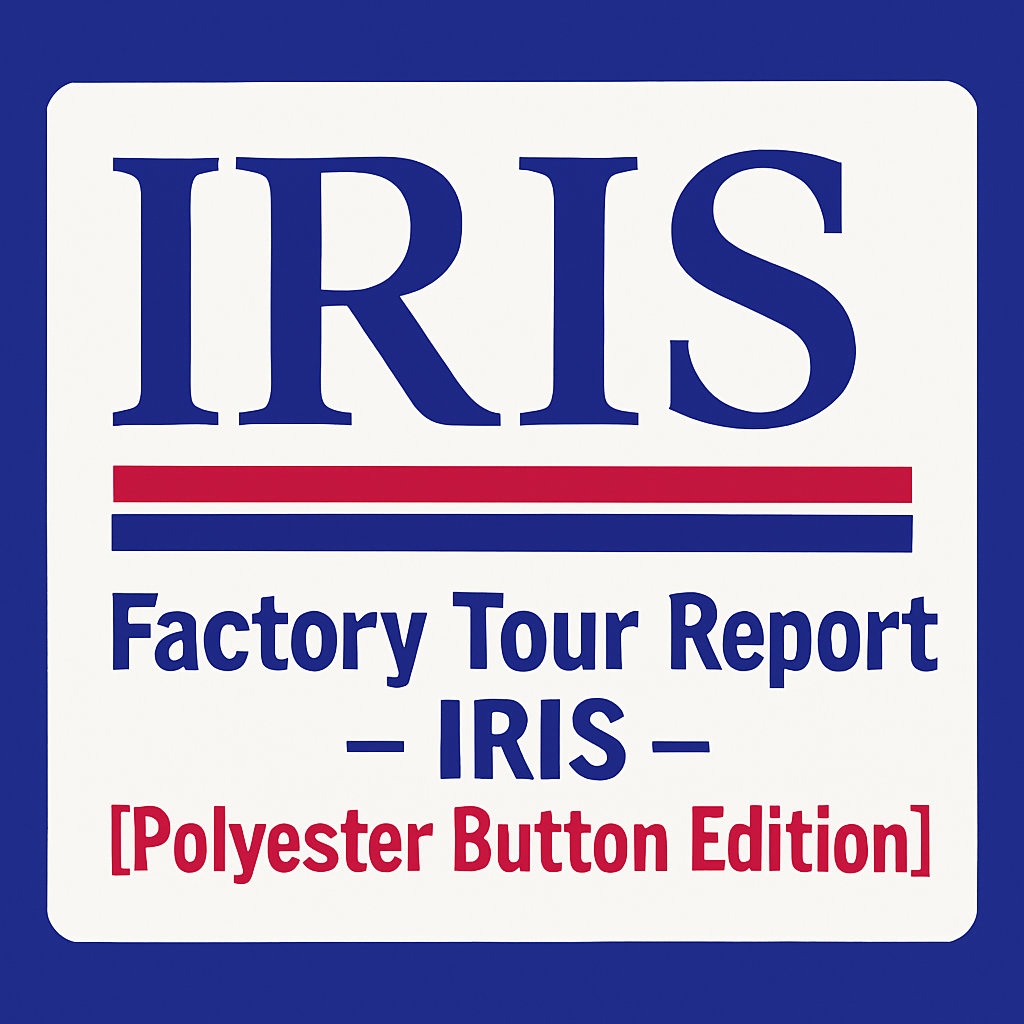Hello! I’m Kosuge, the newest member of the TAILORS WORLD editorial team.
On June 5th, I had the opportunity to visit the factory of IRIS Co., Ltd.
This is the first installment of our report, focusing on polyester buttons and how they’re made!
Ever wondered how the buttons you use every day are created? Let’s find out!
目次

Where Are Polyester Buttons Made?
Polyester buttons are manufactured at IRIS’s Ojima Factory in Gunma Prefecture, Japan.
Our guide for the day was Mr. Masuda, who gave us a warm welcome and an easy-to-understand explanation throughout the tour.

How Are Polyester Buttons Made?
There are two main methods for manufacturing polyester buttons:
- Rod Casting Method (produces buttons from rods)
- Centrifugal Molding Method (produces buttons from plates)


In the plate-type process, raw polyester is mixed with additives and colorants, then poured into a cylindrical machine called a centrifugal molding machine—similar in shape to a large washing machine drum.
The material is cooled until it reaches a gummy texture, then hardened and cut into shape.
The button thickness is controlled by the amount of material poured, allowing for precise adjustment.
In the rod casting method, we observed the production of buffalo-horn-style polyester buttons, using IRIS’s own custom-made machines!
During our visit, they were actively developing a new button pattern!


The rods are cooled, heated, and cut before moving on to the next stage—sorting.
🎉 Quick Quiz!
Q: What’s the biggest advantage of polyester buttons?
A: “They don’t fade!”
Unlike genuine horn buttons, which are surface-coated and may fade over time, polyester buttons have the color embedded within the material itself.
It was eye-opening to see both sides—the beauty of genuine horn and the practicality of polyester.
Shaping the Button: A World of Precision
After sorting, the materials are shaped using special blades.
These blades not only drill the holes but also define the final button shape.
Mr. Masuda explained that “rounding the edges” enhances light reflection, making the buttons look more beautiful.
It’s amazing to learn that even how light hits the button is carefully considered!
Looking at IRIS’s buttons, you’ll notice beveled edges, skillfully angled to enhance shine.
When purchasing their buttons, be sure to admire the attention to detail!


🔗 Check out IRIS’s EXCEL buttons on ApparelX
The Final Touches: Laser Engraving and Polishing
Next comes laser engraving, where text or logos are marked onto the button surface.
Using lasers (rather than molds) makes small-lot customization easy and efficient.
Then, it’s off to the polishing process.
The buttons are placed in a barrel-shaped polishing machine for about 15 hours, followed by another 15 hours with wax and finishing agents.
That’s a total of 30 hours of polishing for a flawless finish!

Inspection, Packaging, and Shipment
The factory uses modern automatic inspection machines, but certain buttons—like shell-look or nut-style—are still carefully inspected by skilled artisans.
After that, the buttons are bagged and shipped out.
IRIS produces around 4 million buttons every month!

IRIS’s Hidden Talents: Beyond Buttons
IRIS’s expertise in button-making has been applied to various original goods as well.
For example:
The popular “Daruma Nyanko” keychains sold at highway rest stops

The charming “Temari” accessories that sit on your smartphone light for a soothing glow

(Both featured on IRIS’s official website)
Check them out here 👉 IRIS Official Website
✂ Summary
Seeing the level of craftsmanship and creativity that goes into replicating natural textures with polyester was a fascinating experience.
What’s more, we were amazed by how IRIS has expanded their button-making skills into such diverse product lines—a true testament to their innovation and scale.
Stay tuned for the next installment! 😀
For inquiries about accessories or garment production services, please feel free to contact us.

I’m Kosuge, and I joined the company in April 2025. I’m currently training hard to become a fully qualified professional. I love Pallas’s cats.


